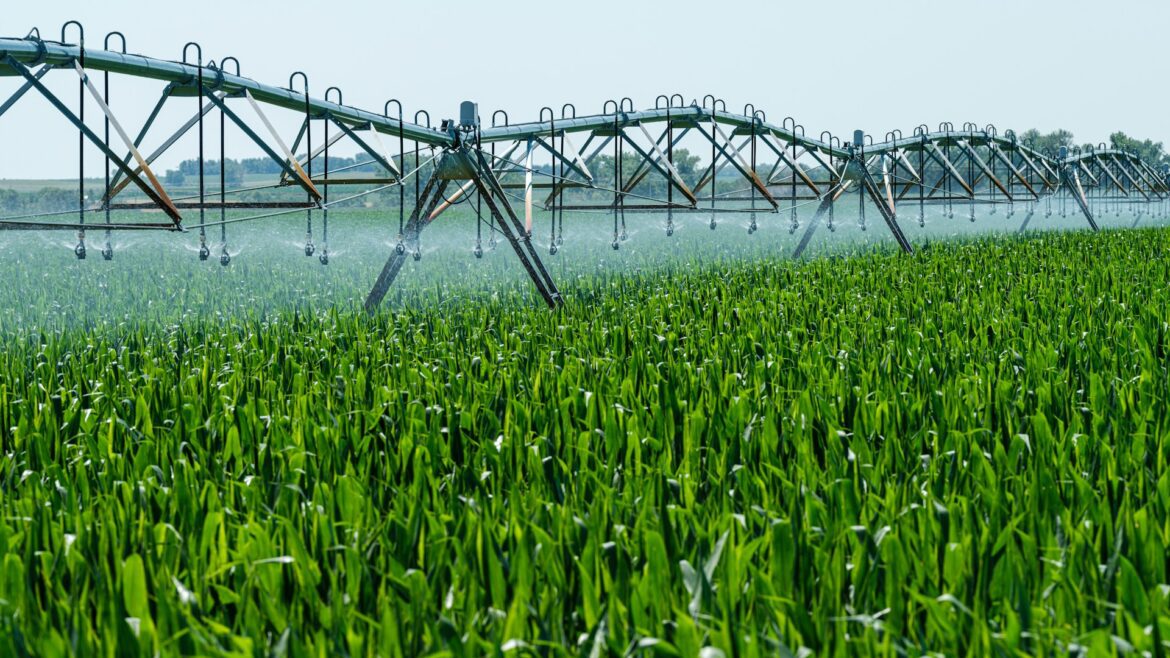U.S. Biotech Sector Focuses on Precision Agriculture in 2024
The U.S. biotech industry is placing a strong emphasis on precision agriculture technologies in 2024, aiming to assist farmers in optimizing agricultural yields, reducing resource usage, and effectively addressing challenges posed by climate change. These emerging innovations are rapidly transforming traditional farming practices by utilizing data-driven solutions, which are essential for sustainable agricultural practices in the face of global food demands and environmental constraints. As the agricultural landscape evolves, the integration of biotechnology and cutting-edge technology promises a more efficient farming sector.
Precision Agriculture in Action
At its core, precision agriculture merges biotechnology with digital tools designed to monitor crop health, manage soil quality, and tailor farming practices to specific environmental conditions. This approach allows for a deeper understanding of agricultural needs by gathering and analyzing data at unprecedented levels. Key technologies making waves in this sector include genetically modified organisms (GMOs), drones, and AI-powered sensors, each contributing uniquely to the optimization of farming methods. With these tools, farmers can implement strategies that enhance productivity, leading to both economic and environmental benefits.
Voices from the Field
Experts in the biotech community are heralding the transformative impact of precision agriculture. Rachel Ellis, a prominent biotech researcher, stated, “Precision agriculture is about farming smarter. It’s giving farmers the tools to produce more with less.” This assertion highlights the fundamental shift from one-size-fits-all approaches in agriculture to more personalized farming strategies that leverage technology to meet specific crop and regional demands. These innovations not only increase yield but also promote sustainable practices in an era where resources like water and arable land are limited.
Key Innovations Driving Precision Agriculture
The innovation landscape for precision agriculture is diverse, featuring several key advancements that illustrate the synergy between biotechnology and technology. First, genetically modified seeds are at the forefront, specifically engineered for traits such as drought resistance and pest tolerance. These modifications lead to reduced water usage and minimize the reliance on chemical inputs, providing critical dividends for both farmers and the environment.
Furthermore, the incorporation of artificial intelligence and drone technology is revolutionizing farming operations. AI tools facilitate the analysis of satellite imagery, allowing farmers to assess crop health and optimize resource allocation based on real-time data. Meanwhile, drones are employed for precision application of fertilizers and pesticides, ensuring that these products are used sparingly and effectively, significantly enhancing sustainability.
Another exciting development in this sector is the emergence of soil microbial solutions. Numerous biotech startups are focusing on the enhancement of soil health by developing specialized microbial products that promote nutrient uptake and improve crop resilience. This innovative method not only enhances productivity but also aids in the sustainable management of soil resources, contributing to longevity and health of agricultural ecosystems.
Barriers to Adoption of Precision Agriculture
Despite the significant benefits of precision agriculture technology, the adoption rate among small and medium-sized farms remains slow due to high costs and the complexity of the technologies involved. This disparity can hinder overall industry progress, particularly in regions that rely heavily on small-scale farming. However, efforts are underway to bridge this gap. Government grants and strategic partnerships with agritech firms are facilitating access to precision agriculture tools for these smaller farming operations. These initiatives help alleviate financial burdens and equip farmers with the necessary knowledge and resources to implement advanced agricultural practices.
The Future of Agriculture in 2024 and Beyond
As precision agriculture technologies become more accessible, 2024 is anticipated to be a transformative year for the U.S. agriculture sector. This shift towards data-driven, efficient farming practices is expected to enhance productivity while also promoting sustainability. The ongoing commitment from biotech firms and government entities to support farmers in this transition will be critical in achieving long-term agricultural resilience. The integration of innovative technologies is not just a trend; it represents the future of farming and food production.
Conclusion
In summary, the U.S. biotech sector’s increased focus on precision agriculture in 2024 marks a pivotal moment for the agricultural industry. By embracing data-driven solutions and innovative biotech applications, the farming sector stands to gain significantly in terms of efficiency, productivity, and sustainability. Addressing the barriers to adoption is crucial for ensuring that all farms, regardless of size, can benefit from these advancements. As we move forward, the collaboration between technology and agriculture will shape the future of food production, enabling farmers to meet the challenges of a changing climate while sustaining the world’s food supply.
FAQs
What is precision agriculture?
Precision agriculture refers to farming practices that use data-driven technologies such as sensors, drones, and AI to optimize crop management and resource use, allowing farmers to work smarter and more efficiently.
What are the benefits of precision agriculture?
The benefits include optimized yields, reduced resource usage, improved pest management, enhanced soil health, and more sustainable farming practices, all of which can contribute to environmental conservation and better economic outcomes for farmers.
What challenges do farmers face in adopting precision agriculture?
Farmers, particularly those operating smaller-scale farms, often face challenges such as high initial costs, the complexity of technology, and the need for training and support, which can hinder widespread adoption.
How is the government supporting precision agriculture?
The government is providing various forms of support, including grants, subsidies, and partnerships with agritech companies, aimed at making precision agriculture technologies more accessible to farmers, particularly small and mid-sized operations.
What role do genetically modified organisms (GMOs) play in precision agriculture?
GMOs play a critical role by being engineered for specific traits, such as drought resistance and pest tolerance, which can reduce the overall need for resources and chemical inputs, making farming practices more sustainable.

